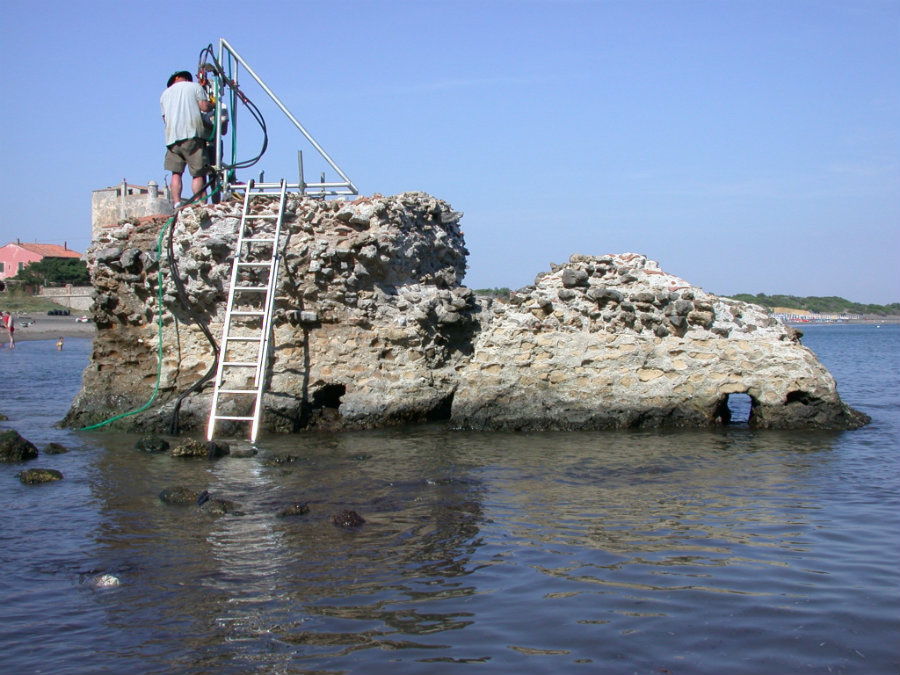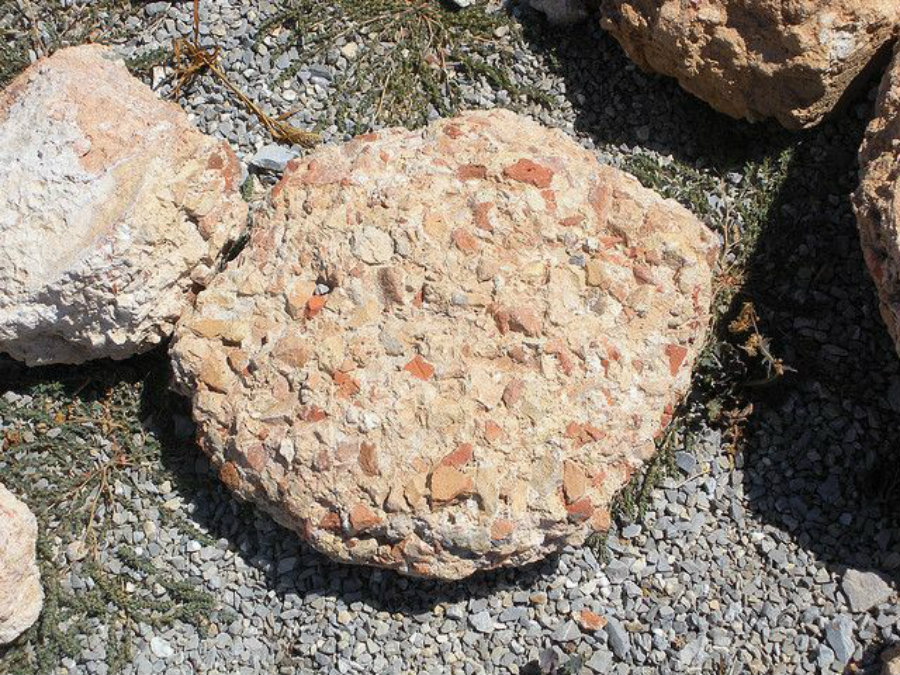A group of scientists just discovered why ancient Roman concrete is the most durable concrete in the world. Over two thousand years ago, Roman builders constructed sea walls and harbor piers with their concrete, and to the date, many of their constructions still stand.
Scientists noted that underwater, this material has withstood for over 2,000 years and counting. The harbor concrete was a mixture of volcanic ash and quicklime, and researchers found that even though it’s been underwater for hundreds of years, the concrete is actually stronger than when it was first mixed.

University of Utah geologist Marie Jackson studied the minerals and micro-scale structures of Roman concrete, and she and her colleagues found that seawater filtering through the concrete leads to the growth of interlocking minerals that give the concrete added cohesion. Their findings were published Monday in the journal American Mineralogist.
Roman concrete is the strongest concrete in the world
Roman concrete was made by mixing volcanic ash with quicklime and seawater to make a mortar and then incorporating chunks of volcanic rock, which acted as the “aggregate” in the concrete. The combination of ash, quicklime, and seawater produces what is known as a pozzolanic reaction, called after the city of Pozzuoli in the Bay of Naples.
“[Roman concrete is] an extraordinarily rich material in terms of scientific possibility,” said Philip Brune, a research scientist at DuPont Pioneer who studies the engineering properties of Roman monuments, according to The Washington Post. “It’s the most durable building material in human history, and I say that as an engineer not prone to hyperbole.”
The Roman concrete was used in many architectural structures, such as the Pantheon and Trajan’s Market in Rome. It was mainly used in massive marine structures that protected harbors from the open sea and served as extensive anchorages for warehouses and ships.

Modern cement, such as Portland, also uses rock aggregate, but the sand and gravel particles are intended to be inert, and any reaction with the cement paste could create gels that expand and crack the concrete. According to Jackson, this alkali-silica reaction occurs throughout the globe, and it’s one of the mains causes of the destruction of Portland cement concrete constructions.
Roman concrete has growing crystals that prevent it from fracturing
Jackson and her colleagues examined the microstructures of Roman concrete samples, which were extracted from the sea walls and piers as part of a project dubbed the Roman Maritime Concrete Study.
“This rocklike concrete is behaving, in many ways, like volcanic deposits in submarine environments,” said Jackson, according to The Washington Post.
The team reported that Roman concrete is filled with tiny growing crystals, which act like small armor plates and prevent the concrete from fracturing. They examined the samples thoroughly using advanced imaging techniques and spectroscopic tests, and the tests revealed a strange chemical reaction: aluminous tobermorite crystals out of another mineral called phillipsite.
This AI-tobermorite has silica-rich compositions, which means it’s similar to crystals that form in volcanic rocks. Jackson noted that this corrosion-like process would currently be a bad thing for modern materials, as Roman concrete involves a system that’s contrary to everything people wouldn’t want in cement-based concrete. She added that we’re looking at a system that thrives in open chemical exchange with seawater.

Jackson is trying to recreate Roman concrete using materials from the western US
Seeing as Roman concrete appears to be more durable than modern concrete and creates far less pollution than Portland cement, Jackson was questioned why it isn’t used more often. She explained that the recipe was completely lost, and although she has extensively studied ancient Roman texts, she hasn’t found the precise method for mixing the marine mortar, to recreate the concrete.
“Romans were fortunate in the type of rock they had to work with,” noted Jackson, according to University of Utah’s UNEWS. “They observed that volcanic ash grew cements to produce the tuff. We don’t have those rocks in a lot of the world, so there would have to be substitutions made.”
Jackson is now working with Tom Adams, a geological engineer, to develop a replacement recipe, but using materials from the western United States. The seawater used in her experiments comes from Berkeley, California, collected by Jackson herself.
Roman concrete takes time to develop strength from seawater and has less compressive strength than the typical Portland cement. That’s why it would be unlikely that Roman concrete could become widespread, but it could be useful for particular cases.
Jackson noted that while researchers have answered many questions regarding the mortar of the concrete, the long-term chemical reactions in the aggregate materials haven’t been as studied. She hopes to continue the work of Pliny the Elder and other Roman scholars who worked arduously to discover the secrets of their concrete.
Source: University of Utah
